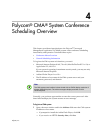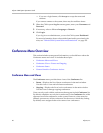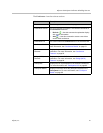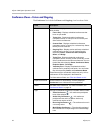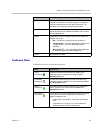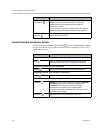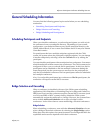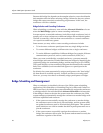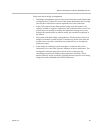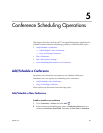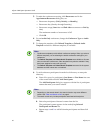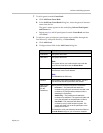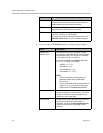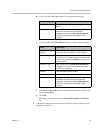
Polycom CMA System Operations Guide
46 Polycom, Inc.
Because this bridge list depends on the template selection, users should make
their template selection before selecting a bridge. Otherwise, they may select a
bridge that cannot meet their conferencing requirements. In this case, the
conference will fail to schedule.
Bridge Selection and Cascading Conferences
When scheduling a conference, users with the Advanced Scheduler role can
select the Multi Bridge option to create cascading conferences.
In some respects, a cascaded conference looks like a single conference, but it is
actually two or more conferences on different bridges that are linked together.
The link is created by a dial-out from one conference to a second conference
via a special cascaded entry queue.
Some reasons you may wish to create cascading conferences include:
• To invite more conference participants than any single bridge can host
• To connect different bridges at different sites into a single conference
• To use the different capabilities of different bridges (for example, different
communication protocols, such as, serial connections, ISDN, etc.)
When you create a multibridge, cascaded conference, you must manually
select bridges and create the cascaded links between bridges by identifying the
originating bridge, the terminating bridge, and the network type (IP or ISDN).
The system displays an interconnection diagram that illustrates the cascaded
links. Once scheduled, each cascaded link appears as a participant in the
conference.
By default, the system automatically assigns participants to the “best bridge”
for them based on available capacity, location, and least cost routing rules.
However, you may also choose to manually assign participants to bridges.
Bridge Scheduling and Reassignment
When a conference is scheduled with one of the CMA system scheduling
applications (Web Scheduler or Scheduling Plug-in for Microsoft Outlook or
IBM Lotus Notes), by default the system automatically assigns the conference
to a bridge unless a user with the default Advanced Scheduler role intercedes.
If that bridge is down at the time the system starts the conference, the CMA
system attempts to dynamically reassign the conference to another bridge with
sufficient capabilities and resources.
• If the system can successfully reassign the conference to another bridge,
the conference starts on the newly selected bridge, and the system sends
an updated conference email to all scheduled participants. This updated
email includes a new dial-in number that dial-in participants must use to
join the conference.
• If the system cannot successfully reassign the conference to another
bridge, the conference fails to start. The system sends an email to notify the
conference organizer of the failure.




